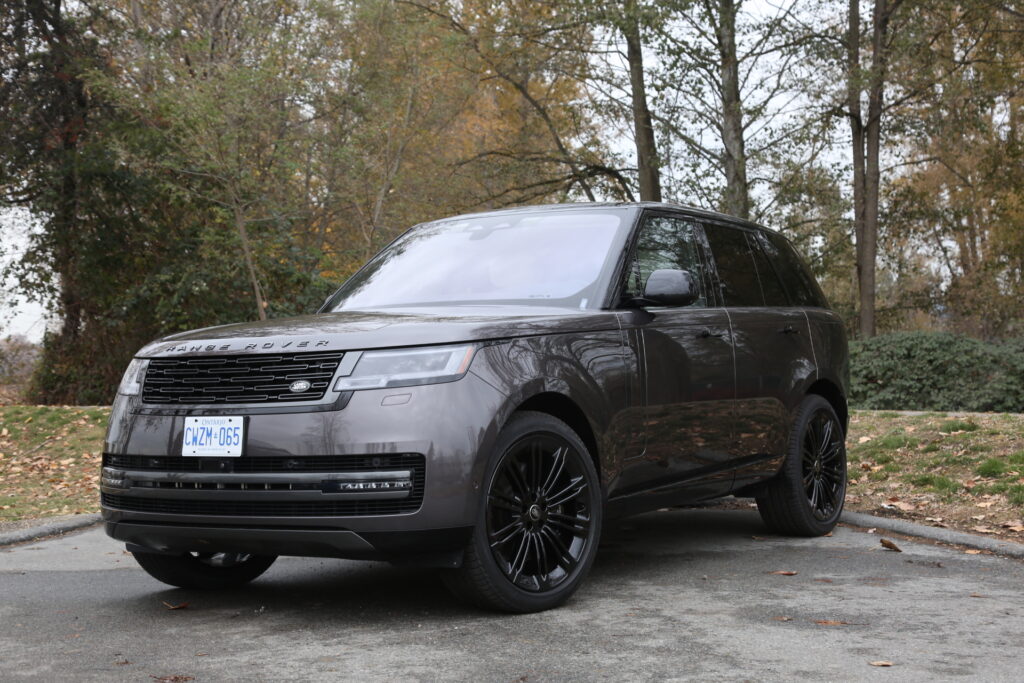
The Range Rover has been around for over five decades, and the model pioneered the luxury SUV genre about four decades ago. In all that time, this iconic British rig has stayed true to the formula, and today, is in the position to command a very high price in the market.
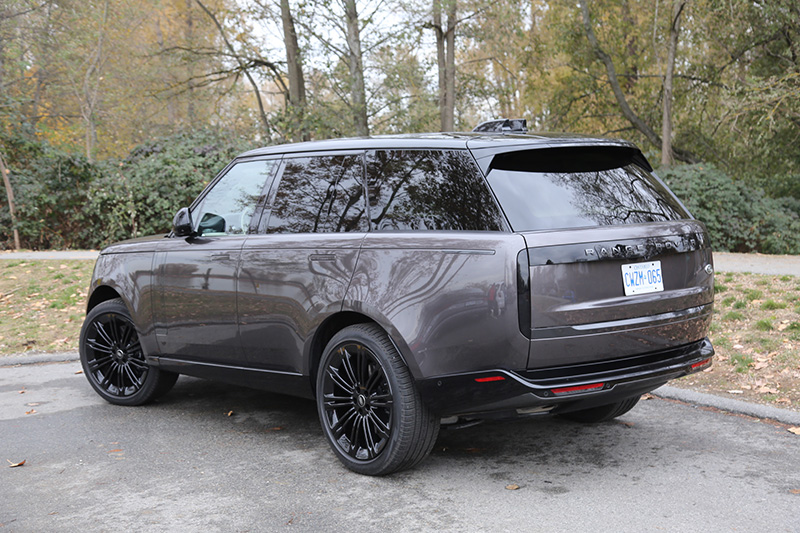
You would be hard-pressed to find a more quiet, relaxed, and refined high-end SUV, one that is the equal of all the other high-end SUVs on the road, but which also has the best off-road capabilities in this prestige class.
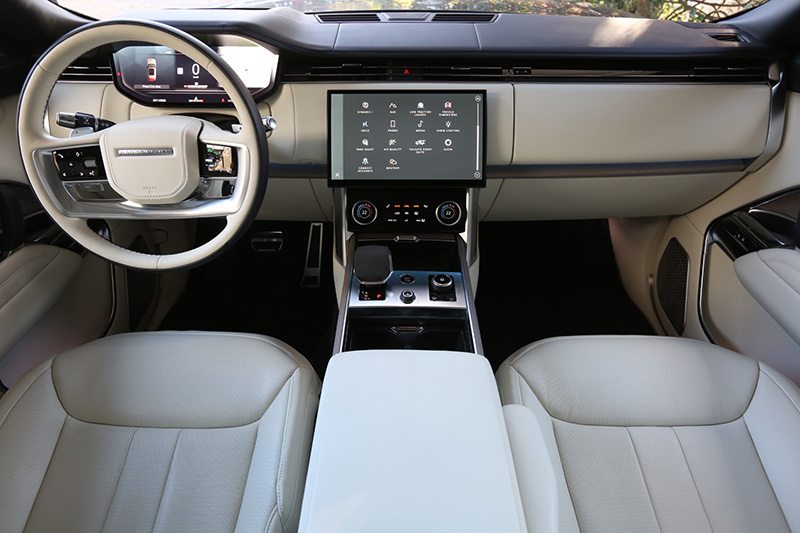
Since the interior of a vehicle defines its level of luxury to most people, we’ll start there. The short description is, it’s quite beautiful, with top-level materials like fine leather (Perlino perforated Semi-Aniline) seats, dashboard and doors, real wood (Ecru Walnut) and aluminum trim, and appealing design. The heated and cooled front seats are adjustable some 24 ways, offer your choice of massage, and are wide enough to assure comfort for everyone.
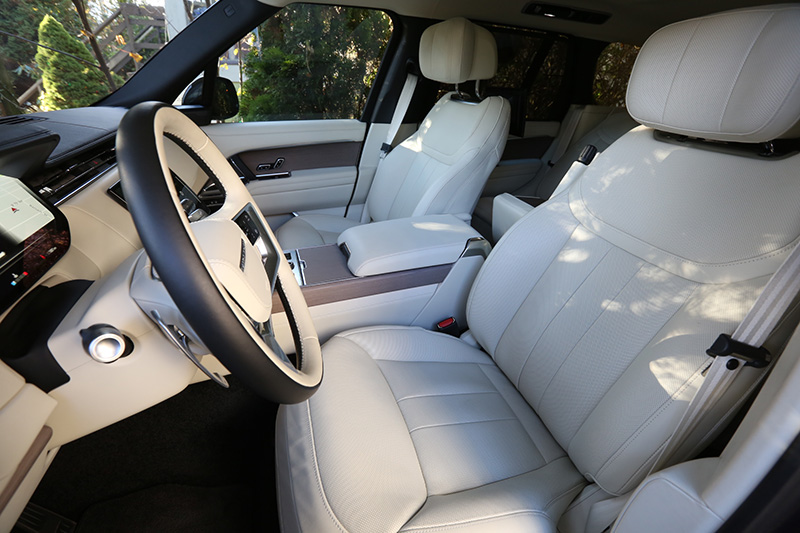
The obligatory touch screen is large (13-inches) and easy to use, which is a good thing, because most of the driver-variable functions are controlled thereon. It’s not all that intuitive at first, but with a little practice, it started making some sense, as much as it could with just so many features that can be controlled. The feature we used and liked the most was the 1,600-watt Meridian audio system with some 35 speakers.
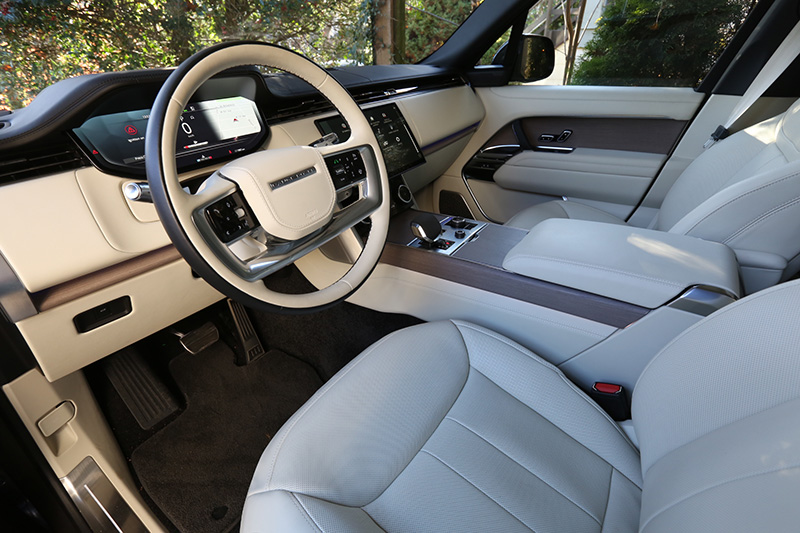
The rear seat is usually not where your passengers will want to be in most vehicles, but in this case, Range Rover has challenged convention. They call those seats Executive Class Comfort Plus, and they do look like business-class seats on a long-range airliner. The seats themselves are pretty much duplicates of the front ones – multi-adjustable including recline, temperature-control, and even massaging. But it is all the other amenities, fully controllable from the touch screen in the electrically-lowered console, that makes this a limo SUV.
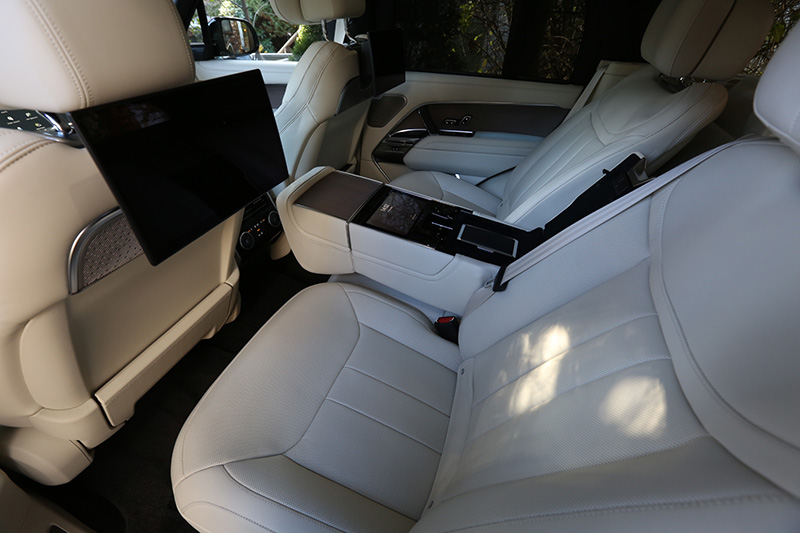
Power cupholder extender, climate control including air quality (purifier and ionizer), ambient and task lighting variable for intensity and colour, roof and side-window blinds open or close, control of the two 11.4-inch screens on the back of the front seats….it’s the lap of luxury back there. It must be said, though, that it isn’t especially roomy, as the seats are all so physically big, there is less space than you might like. The same goes for the cargo area, which can be extended at the push of a button, lowering the rear seats. There is a long-wheelbase RR with a third row, so that might be the model to consider if space is important. Of interest is that the rear opening consists of a “clamshell” arrangement with a hatch opening up, and a smaller section swinging down like a pick-up’s. Range Rover is marketing that design to those who like to go to outdoor events and “tailgate” or party with their vehicle. A leather cushion is supplied for comfort sitting on the tailgate, and there are cupholders built in.
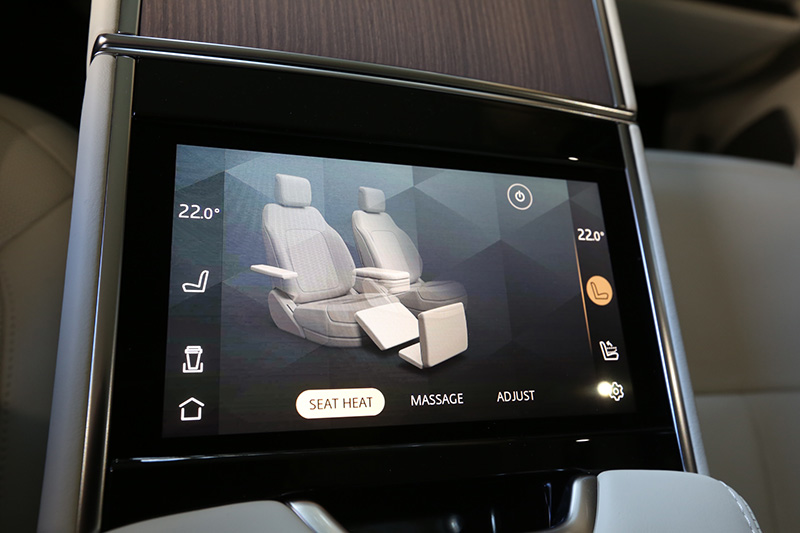
So what is the Range Rover P530 like to drive? Well, unlike the six-cylinder P400 models which have a couple of hybrid systems from which to choose, the P530 is all gasoline combustion engine, all the time, except when the “stop-start” system shuts it down at stop lights. It’s a 4.4-litre, DOHC V8 with twin turbos, sourced from BMW, and it replaces the venerable supercharged 5.0-litre unit that has powered Range Rovers for many years previous. It has 523 horsepower, and torque is 553 lb-ft as low as 1,800 rpm, so it moves this 2,588-kg beast with no waiting; zero-to-100 km/h is achieved in 4.6 seconds. It is rated for 3,500 kg of towing.
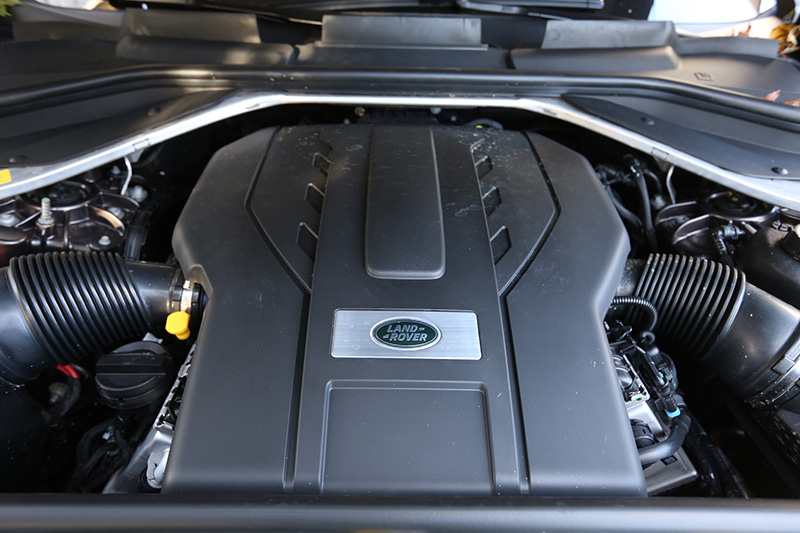
Other than the sheer speed, what impressed us the most was the serene quiet of it all at anything short of full throttle, thanks to the turbos which mute the engine, along with acoustic glass and active noise cancellation. And that reminded us the most of a two-motor electric vehicle. Kind of ironic….this old-tech gas-only big-power luxury vehicle drives just like an EV. Except for the 18L/100 km consumption in light-footed urban driving.
The rest of the driveline consists of an eight-speed automatic (more gears aren’t needed with this kind of low-end torque) putting the power to the full-time all-wheel drive. There are three driving modes from which to choose – Eco, Comfort and Dynamic. Being a Land Rover product, it must also maximize its off-road capability, and to that end, there is the Terrain Response system, which can be set to Auto, or manually selected to Grass-Gravel-Snow, Mud-Ruts, Sand, Rock Crawl, and Wade. Those options become more unlikely to be chosen as you progress up the list, one has to think, as those driving this top-of-the-line Range Rover are heading to the ski cabin more than they are climbing rocky mountain trails that require traversing rivers. That is especially the case with the excellent-on-the-road Pirelli Scorpion 285/40-23 all-season tires it is equipped with. With proper off-road tires, the air suspension set to “fully raised,”(295 mm ride height) and the centre and rear differentials locked (as they can be), one might be willing to take it a bit further off-road.
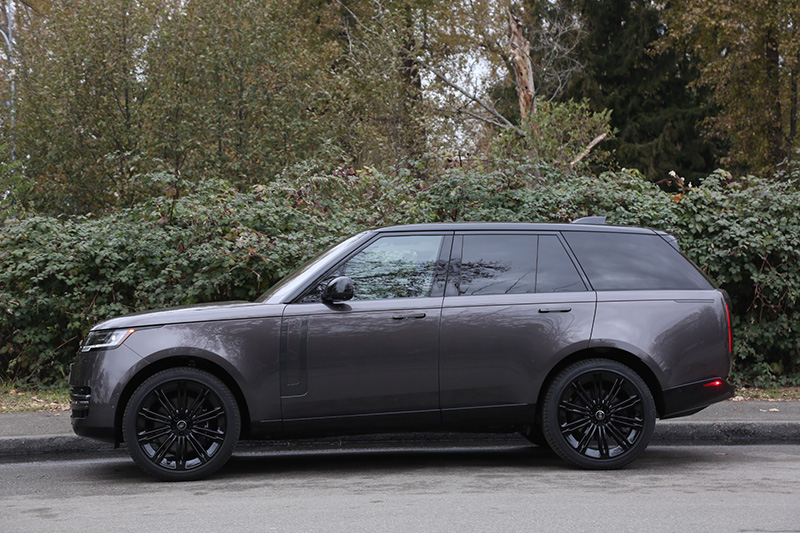
Perhaps the biggest surprise in driving the P530 is how nimble it feels for such a big vehicle. The air suspension has much to do with that, as does the rear-wheel steering, which serves to reduce the radius of corners and make it feel smaller. On the other hand, the front-wheel steering is a bit devoid of feedback.

Appearance wise, the new Range Rover looks much like the previous generation, and still not like anything else. The vertical trim on the front doors has been toned down, at least on this First Edition. With the dark grey paint and lots of (optional) black trim and roof, it certainly has road presence, although the black wheels (a trend I wish would disappear) take away most of the visual elegance and panache that polished alloy wheels would impart.
The lesser P530 models start at $143,900, but this fully loaded First Edition will cost you at least $182,000. So, all in, you won’t get much change from a quarter mill. Like they say, if you have to ask the price….It’s a good value, though, as it’ll do off-road things the more expensive Bentley or Lamborghini can’t.




